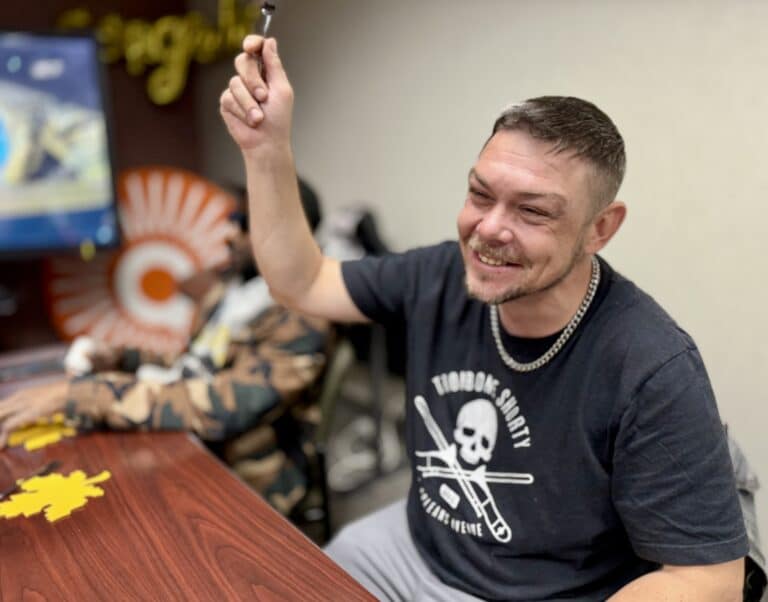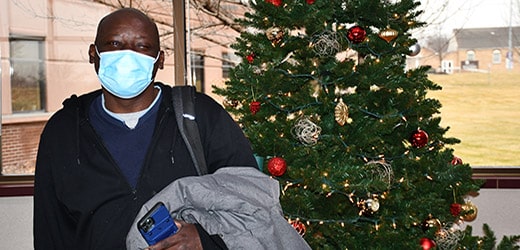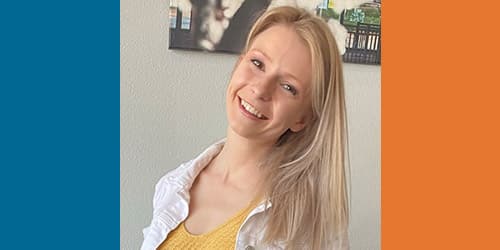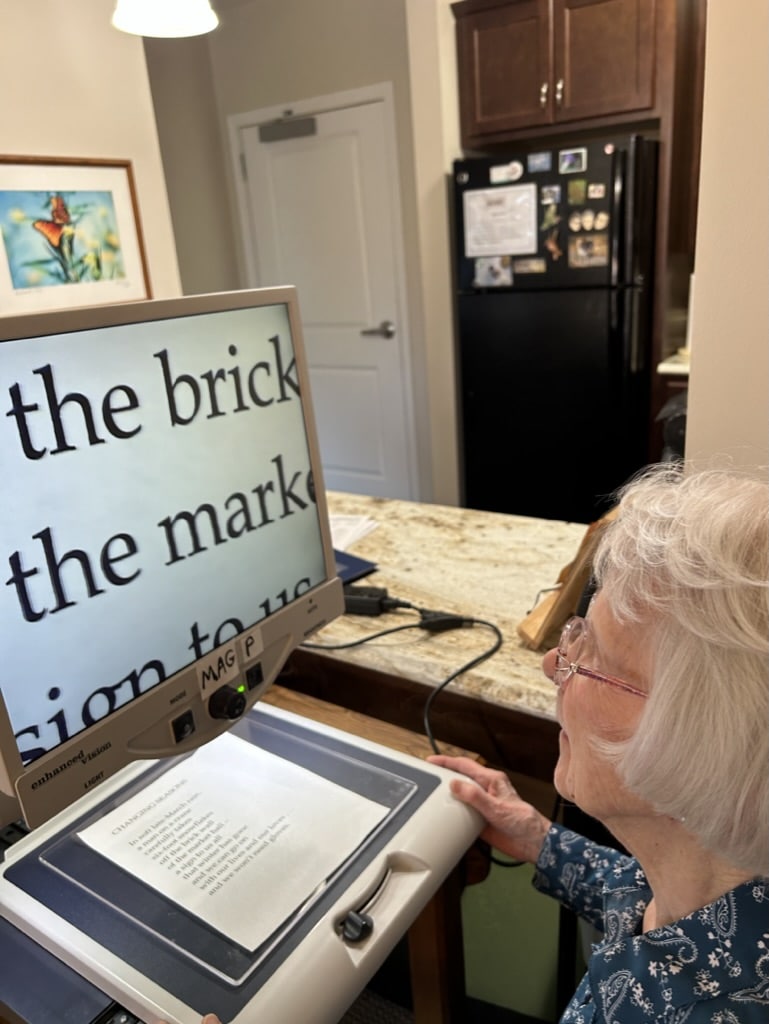Through Our Eyes: Living and Thriving
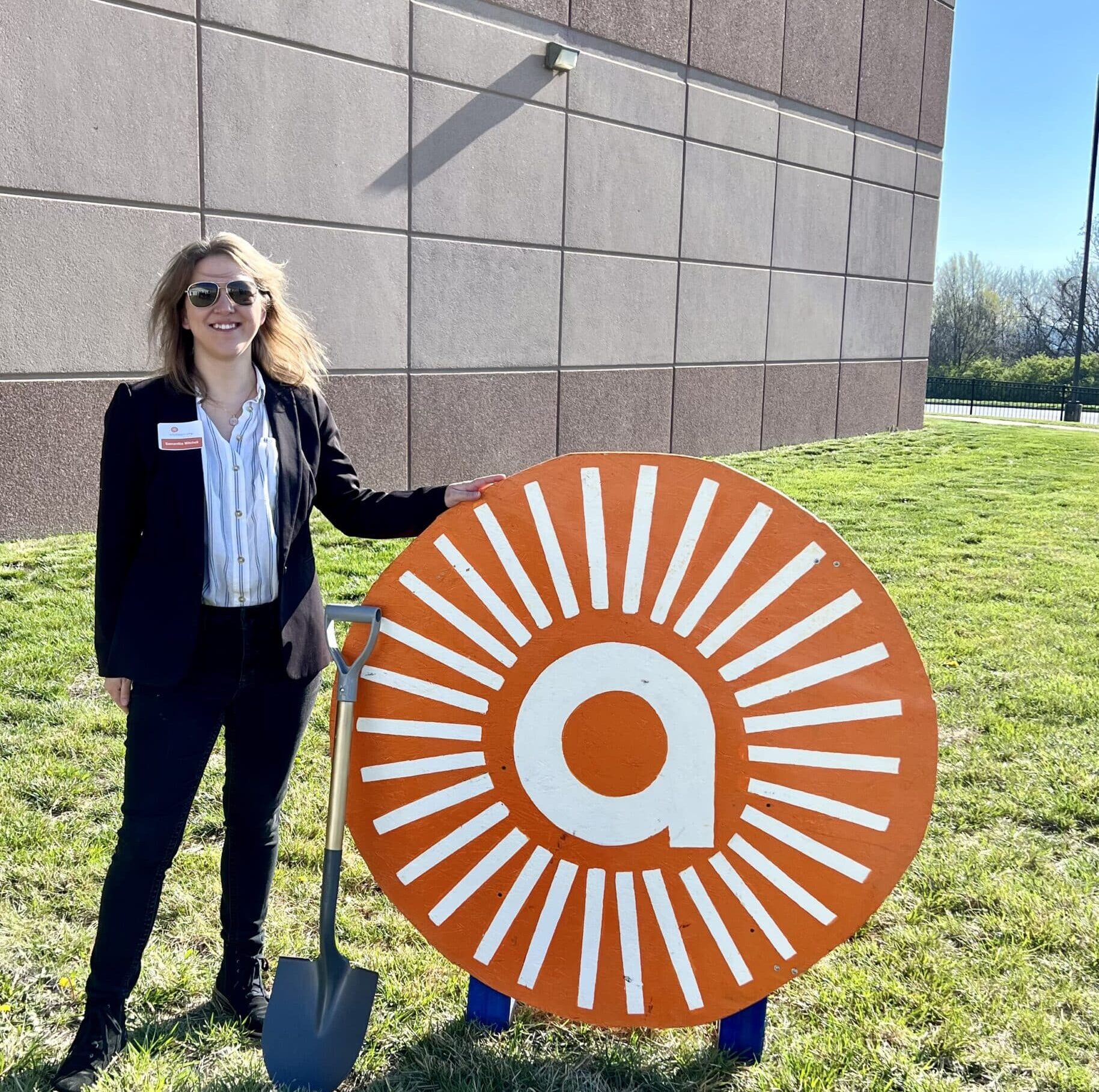
When she first started elementary school in Liberty, Missouri, there was nothing in particular that separated Samantha (Sam) Mitchell from her fellow classmates. But, as the years passed, much to Sam’s consternation and growing embarrassment, she couldn’t help but notice that the proximity of her desk and the front of the classroom grew closer and closer.
By first grade, Sam would be wearing glasses, and by third grade she would be sitting at the front of the class. This was not for disciplinary reasons, nor did Sam desire to be the center of attention. Quite the opposite, in fact. Sam’s distance from the blackboard was narrowing, due to the gradual loss of her eyesight. By fifth grade Sam would move beyond the font row to be sitting against the wall next to the whiteboard. More uncomfortable still, she was completed separated from the rest of the students, which she had tried so hard to keep to herself.
Now her secret was known by everyone.
Vision Loss and Diagnosis
For any young woman, the list of awkward and uncomfortable situations that accompany being 13 years of age can be a lengthy one. Few, however, must add vision loss to that list. As a young girl, Sam would end up being subjected to a battery of medical testing until, at the age of 14, she was diagnosed with Stargardt’s disease, a very rare disease resulting in a dramatic decrease in central vision.
Middle and High School with Vision Loss
Over the next several years, Sam was forced to confront the usual challenges of middle school and high school, coupled with learning how to adapt to life as a teenager with vision loss.
“There were so many busses in the school parking lot that I struggled to independently find my own bus,” she says. “Friendships were coming and going, so I didn’t always have someone I could count on to help me. So, after a while my mom dropped me off in the morning and I walked home to avoid the awkwardness.”
Sam would also have to use large print textbooks, the dimensions of which were roughly one foot wide by 18 inches tall. They wouldn’t fit in her backpack; rather, she had to carry them around for all to see.
The College Years: Architecture
Sam took her love of art, mathematics and engineering with her into college and pursued her passion of becoming an architect.

“I wanted to be an architect or a veterinarian but I decided that people probably wouldn’t want someone who couldn’t see fine details operating on their pets,” joked Sam. Before leaving for college, however, Sam would take independent life skills training at Alphapointe. This was her first exposure to other people with vision loss.
After Alphapointe, Sam would become a Wildcat, participating in a five-year masters program at Kansas State University.
Competing in a Sighted World
Now, with 10 years of professional experience to her credit, Sam uses a variety of technologies to perform her job as an architect. She uses two large monitors, as well as screen scaling programs, and Windows magnifier for zooming in and out.

“I am so thankful for technology,” she says. “I can zoom in and go into great detail. I can tell you how the flashing looks on a windowsill. Even though I have never seen it, I can draw it.”
When it was brought up that her firm, ACI Boland Architects, would be designing the expansion for Alphapointe and its new warehouse, Sam jumped at the opportunity to be the lead architect on the project for the organization that helped give her more independence.

Acceptance of Visual Impairment
While Sam has more than proved herself in the world of professional architecture, she is sometimes still reticent to disclose her visual impairment.
“When applying for a job, I generally do not disclose my disability during the interviewing process, I usually wait until I have a job offer,” explains Sam. “I am now becoming more comfortable with my disability, and I am curious if moving forward I will start having more open conversations with people about it.”
Family Life
Other than being a very successful professional woman, Sam is also a wife and mother. She has been with her husband for 18 years, and married for 9 of those years, and is the mother of two beautiful little girls.
“It’s been interesting to navigate parenthood,” confesses Sam. “I was worried I would miss out on things, but it is just a different kind of connection. When my daughter was born, I wanted to see her so badly, but I heard her first cry, and that was huge to me.”
Living and Thriving
While Sam’s personal and professional life has not been without its struggles, this makes her story of strength and perseverance even more beautiful and inspiring.
“I operate so much on memory, sound and smell, that it sometimes takes a toll on me emotionally,” she admits. “This could look like I don’t have the same stamina as others, but in fact I just have a different kind of stamina, maybe even more.”
No matter the number of struggles, awkward situations or adaptions, Samantha Mitchell is living, breathing, undeniable proof of what people with vision loss are truly capable of. She perfectly embodies what it is like to not just live with vision loss, but to take control of it and thrive with it.
“I wouldn’t change the past,” she concludes. “I wouldn’t undo it, because I wouldn’t be who I am without the experience, and I am at piece if there is no cure in my lifetime.”

Supporting Alphapointe helps provide workforce development and skill building opportunities for people who are blind and visually impaired but dream of achieving their dream. Donate now.

